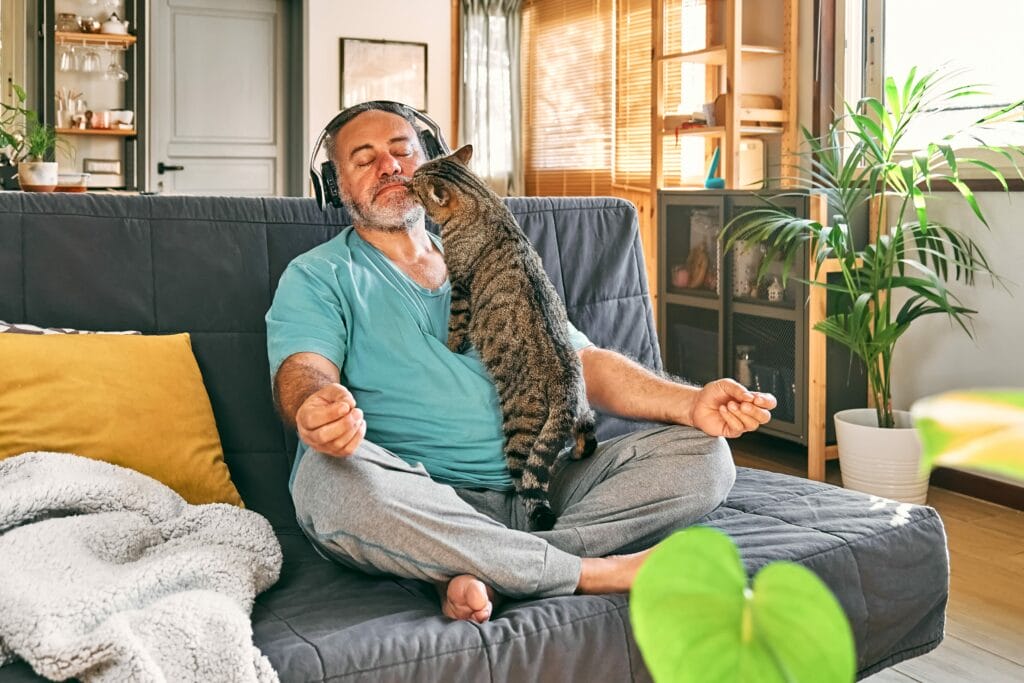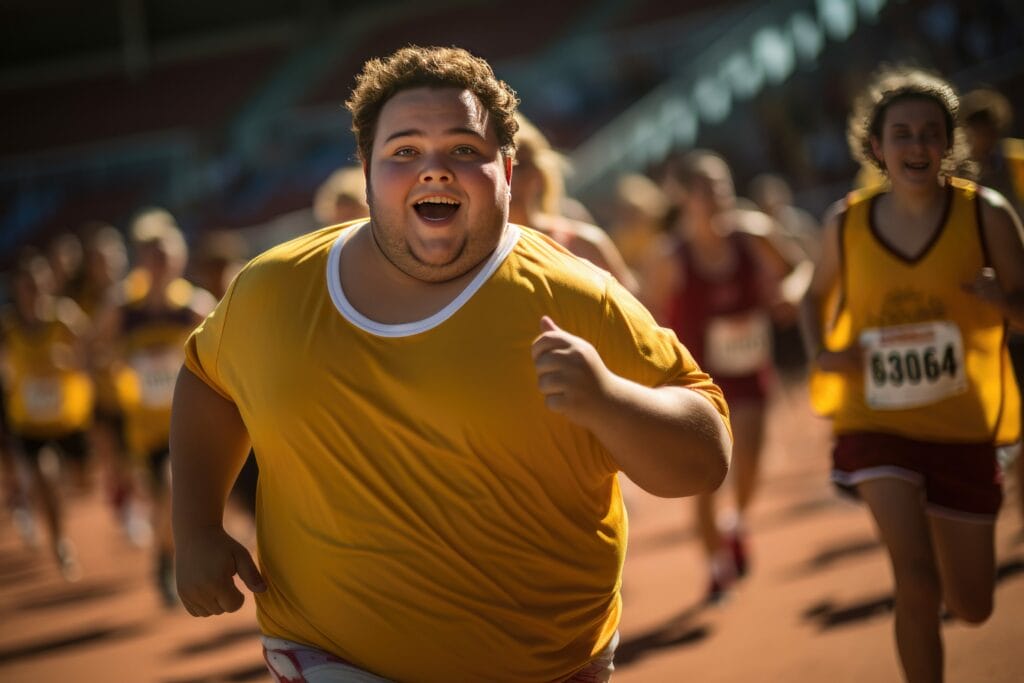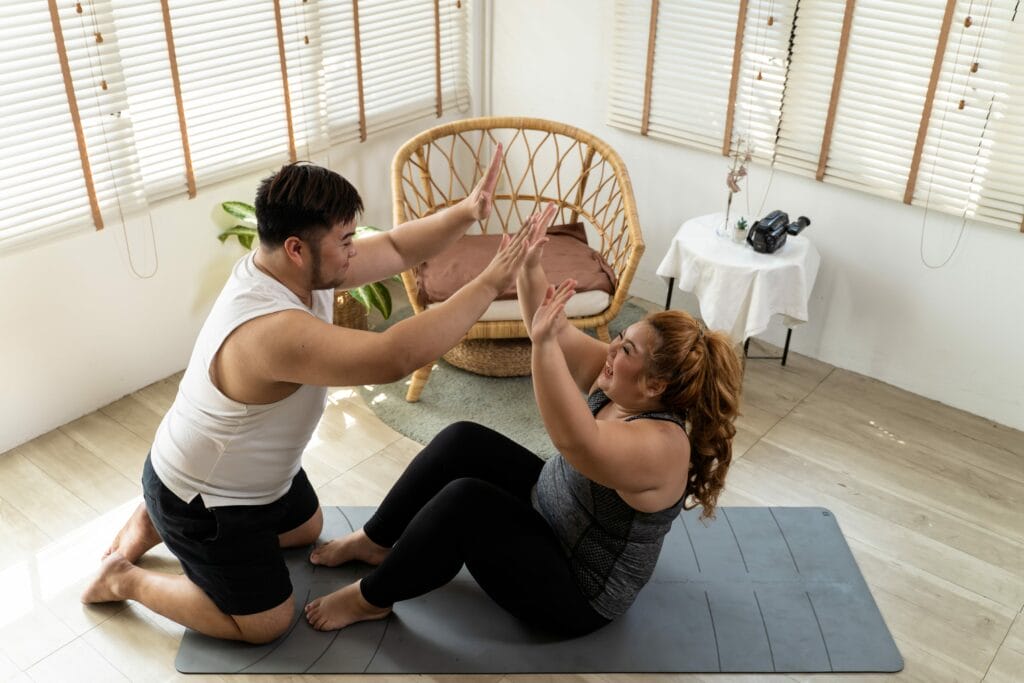Binge Eating Disorder (BED) is the most common eating disorder out there, and it’s something that a lot of people deal with. Imagine sometimes feeling like you can’t stop eating, even if you’re already full, and afterward feeling really bad about it. That’s what happens when someone has BED. It can also make someone feel really down, anxious, or have a really low opinion of themselves.
Getting better from BED isn’t about eating less or trying to lose weight. It’s about getting help from professionals who understand what’s going on in your mind, learning about food in a way that’s not scary or all about rules, and finding ways to move your body that make you feel good.
So, tackling BED means dealing with it from all sides—talking about thoughts and feelings, developing a balanced relationship with food, and getting active in a fun way. In the next parts, we’re going to talk more about how getting moving can be a secret weapon in feeling better again, with some helpful tips for making exercise a fun part of getting better.
Understanding Binge Eating Disorder
Let’s dive into what Binge Eating Disorder, or BED, really is. Imagine sometimes feeling like you have zero control over how much you eat, like you can’t stop even when you’re way past full. It’s not just about how much food is eaten; it’s about feeling powerless during these eating episodes and feelingreally upset or guilty afterward.
What Makes BED Official?
Doctors look for specific things before saying someone has BED. These symptoms include eating much more food than usual in a short time at least once a week for three months, feeling out of control while eating, eating more rapidly than usual, eating until feeling uncomfortably full, eating large amounts when not physically hungry, eating alone because of being embarrassed about how much you are eating, and feeling disgusted, distressed or guilty after eating.Unlike other eating disorders, people with BED don’t do things like purge (make themselves throw up) or exercise a lot to try to make up for overeating.
Why Do People Get BED?
There’s a lot going on behind the scenes of BED. It’s not just about food. Stress, feeling down, or anxiety can trigger binge eating. Some people might binge eat when they’re bored or unhappy, or they use food as a comfort or a way to deal with tough emotions. On the flip side, how our bodies react, like changes in hormones or brain chemicals, can also make someone more likely to have BED. So, it’s a mix of what’s happening in our minds and bodies.
The Misunderstandings
There’s a lot of wrong info out there about BED. Some people think it’s just a lack of willpower or a bad habit, but it’s way deeper than that. It’s a real medical condition that needs understanding and proper treatment. People often don’t get the help they need because they’re embarrassed or they think they’ll just be told to diet and everything will be fine. But beating BED isn’t about dieting; it’s about getting to the root of the problem and dealing with the emotions and behaviors around eating.

BED can make someone feel pretty lonely, but it’s important to know that there’s help and understanding out there. By learning more about what BED really is, we can start to break down the walls of misunderstanding and support each other better.
The Role of Physical Activity in Mental Health
Let’s talk about how physical activity is not just about getting fit or buff—it’s also about feeling good on the inside and boosting your overall health. Ever notice how a quick walk or a dance session in your room can lift your mood? That’s exercise doing its magic on your brain, not just your muscles.
Exercise: The Ultimate Mood Booster
When we get active, our body releases these remarkable chemicals called endorphins. Think of them as your body’s natural happy pills. They play a big part in making us feel good, reducing pain, and even helping us to chill out and feel more relaxed. So, when you’re feeling down or stressed, moving your body can be a natural pick-me-up.
Kicking Stress and Boosting Confidence
Exercise is also a superhero when it comes to tackling stress and building up our self-esteem. When we’re physically active, we’re giving our mind a break from the daily grind, which can help lower stress levels. Plus, getting stronger, faster, or just being able to move more can make us feel really good about ourselves. It’s like every step, jump, or stretch tells our brain, “Hey, look what I can do!”
Exercise and Binge Eating: What’s the Connection?
So, how does all this relate to binge eating? Well, being active can help in a few cool ways. First, those endorphins can help make us feel less like we need to turn to food for comfort. Exercise can also be a great distraction, giving us something positive to focus on instead of eating because we’re bored or stressed. Plus, it can be a powerful tool in our coping skills and strategy toolbox, giving us a healthy way to deal with emotions or situations that might usually lead us to binge eat.

In short, moving our bodies can be a big part of overcoming binge eating because it helps us handle stress, boosts our mood, and gives us a sense of achievement. And the best part? There are so many ways to get active, so it can be fun to explore and find what makes you feel good. Whether it’s dancing, hiking, swimming, or even just walking your dog, every bit of movement counts towards feeling better, both body and mind.
Research Insights: Physical Activity and BED
Now, let’s dive into the brainy stuff—what science has to say about physical activity and its role in beating Binge Eating Disorder (BED). Spoiler alert: the news is pretty good!
What the Experts Say
Research has been digging into how exercise can be a game-changer for folks dealing with BED. Studies show that regular physical activity isn’t just good for your muscles; it’s also super beneficial for your brain and can be a key player in recovering from BED. For example, people who get moving regularly tend to have fewer binge eating episodes. They also report feeling happier and less stressed, which can make a big difference in managing BED.
But here’s the kicker: it’s not just about burning calories. The real magic happens because exercise changes the way our brains work. It helps improve our mood, reduces cravings for comfort eating, and gives us a healthy outlet to deal with life’s ups and downs.
Real Stories from Real People
There are tons of inspiring stories out there from people who’ve battled BED and found a friend in fitness. Like Alex, who started with just 10-minute walks around the neighborhood and found that these walks were his time to reflect, breathe, and take a break from the chaos of the day. He said it made a huge difference in how he handled stress and his urge to binge eat.
Then there’s Jamie, who discovered yoga and said it was a game-changer for her. Through yoga, she learned to connect with her body in a kind, respectful way, and found a sense of calm that helped her manage her emotions without turning to food.
The Bottom Line
All this research and these personal stories point to one thing: incorporating physical activity into your life can be a powerful part of overcoming BED. It’s not just about getting fit; it’s about creating a healthier, happier mind, which is just as important as a healthy body. Remember, the goal isn’t to become an Olympic athlete overnight. It’s about finding joy in movement and using it as a tool to feel better, inside and out.
Guidelines for Incorporating Physical Activity into BED Recovery
Getting into exercise when you’re dealing with Binge Eating Disorder (BED) can feel a bit like stepping onto a dance floor when you don’t know any of the moves. But don’t worry, we’ve got some tips to help you start grooving in a way that feels good for you.

Kicking Things Off Safely
First things first: if you’re thinking about starting to exercise, it’s a smart move to chat with a doctor or a professional who knows your story. They can help make sure you’re picking activities that are safe and right for you.
Finding Your Fitness Vibe
When it comes to the types of exercise that rock for BED recovery, there’s no one-size-fits-all. It’s all about what makes you feel awesome. Here are a few ideas:
- Aerobic Exercise: Things like walking, cycling, or swimming are great for getting your heart rate up and boosting those happy brain chemicals.
- Strength Training: Lifting weights or doing bodyweight exercises can make you feel strong and empowered.
- Flexibility Exercises: Stretching or doing yoga can help you feel more connected to your body and chill out your mind.
- Mindfulness-Based Activities: Yoga or tai chi can be super calming and help you tune into your body in a kind, respectful way.
Jumping Over Hurdles
It’s totally normal to hit some bumps on the road to being more active, especially if you’re feeling low on motivation, worried about your body image, or scared of what others might think. Here are a few ways to leap over those hurdles:
- Start Small: You don’t have to run a marathon tomorrow. Even a 10-minute walk counts. The key is just to get moving.
- Pick Activities You Actually Like: Exercise shouldn’t feel like a punishment. Find something you enjoy, so it’s something you look forward to.
- Buddy Up: Exercising with a friend can make it more fun and less intimidating.
- Be Kind to Yourself: Remember, it’s okay to have off days. Beating yourself up won’t help, but being kind to yourself will.
Setting Goals Support You
When it comes to setting goals, think about what’s realistic and achievable for you right now, not what someone else says you should be doing. And celebrate the small wins! Every step you take is a step toward feeling better.

Loving the Exercise Life
Developing a positive relationship with physical activity means seeing exercise as a friend, not an enemy. It’s about moving your body because it feels good and is good for you, not because you’re trying to meet some impossible standard. Celebrate what your body can do, find joy in movement, and let exercise be a part of your journey to recovery.
Supporting Recovery Through Physical Activity: Practical Tips
Jumping into physical activity as part of your journey to overcoming Binge Eating Disorder (BED) can be like adding a secret ingredient to your favorite recipe—it just makes everything better. Here are some ways to sprinkle a little exercise magic into your daily life, get the right folks in your corner, and rally your personal cheer squad.
Making Movement a Part of Your Day
- Sneak in Mini Workouts: Who said you need a gym membership to get moving? Do some stretches while watching TV, take the stairs instead of the elevator, or have a mini dance party to your favorite tunes in your room.
- Set a ‘Move More’ Alarm: Sometimes we get so caught up in what we’re doing that we forget to move. Setting alarms as little movement reminders throughout the day can be a game changer.
- Walk and Talk: Catching up with a friend? Why not turn it into a walking meeting? You get to socialize and exercise at the same time.
Guidance from the Pros
- Team Up with the Right Experts: Working with health and fitness professionals who understand eating disorders can make a big difference. They can help you find the right balance and make sure your exercise plan supports your recovery, not complicates it.
- Stay in Check: Regular check-ins with these pros can help adjust your plan as you progress, ensuring that exercise remains a healthy part of your life.
Cultivating a Cheer Squad
- Share Your Goals: Letting family and friends know about your exercise goals can help them support you in the best ways. Maybe they’ll even join you for a workout!
- Educate Your Circle: Sometimes, well-meaning peeps might not get why or how you’re using exercise in your recovery. Sharing a bit about your journey can help them understand and be the cheerleaders you need.
- Create Healthy Challenges: Partner up with friends or family for friendly, health-focused challenges. Who can hit the most steps in a week? Who can try the most new types of exercise in a month? It’s all about fun and support.
Recovery from BED is a journey, and adding physical activity to your toolbox can be a powerful step. Remember, it’s not about being perfect or hitting the gym every day. It’s about finding joy in movement and using that positive energy to fuel your recovery. With the right strategies, support from pros, and encouragement from your personal cheer squad, you’re not just moving your body—you’re moving forward.
Conclusion
Alright, we’ve taken a pretty cool journey together through the world of physical activity and its superpowers in helping overcome Binge Eating Disorder (BED). To wrap it up in a neat little package, remember:
- Exercise is Your Friend
- There’s No One-Size-Fits-All
- Small Steps Lead to Big Wins
- Support is Key
If you’re navigating the choppy waters of BED, know that physical activity can be a lighthouse guiding you to safer shores. It’s an incredible complement to other forms of treatment and recovery strategies, offering benefits that touch every part of your life.
For more tips, guidance, and resources, the Center for Healthy Eating and Activity Research is here for you. We’ve got a treasure trove of information and support services designed to help you on your path to recovery.



